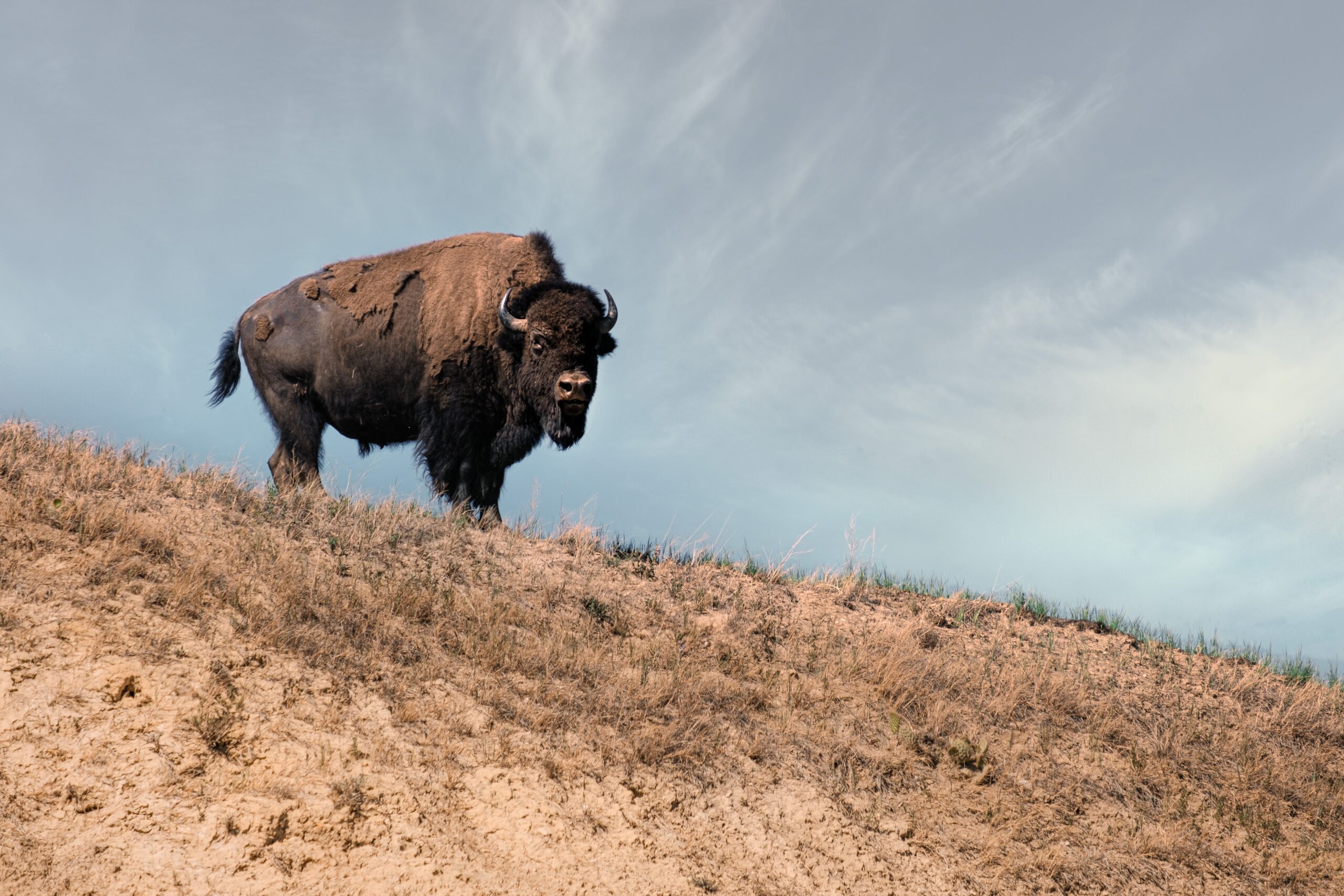The bison is a majestic, mysterious species of the American grasslands. The behemoths were hunted close to extinction, but their numbers have rebounded substantially since the 20th century. Since their reintroduction to the prairies between Canada and Texas, bison have played a vital role in the ecological balance of grasslands. New research theorizes that bison grazing is critical in promoting plant diversity in endangered prairie lands.
This field study has been a three-decade-long project that has yielded some remarkable data. The nuts and bolts of this study have proven that when bison are allowed to graze through patches of tallgrass, they boost native plant species’ prominence by 86%. Compared to domesticated cattle grazing, it’s almost like a night and day difference. Cattle only promoted plant diversity to around 30%, three times less than bison. The data explains how native species richness in prairies was 103% higher in bison-grazed areas compared to ungrazed ones. The more grazing across a broader stretch of land, the more diversity was found.
In the three decades in which bison grazing has been researched and observed, there have been up to 252 academic studies on herbivore grazing connected to biodiversity. The studies have all concluded that bison are among the best animals to promote prairie diversity. They were ranked in the 95th percentile, having the most dramatic effect out of all grazing herbivores. With all of this in mind, buffalo grazing would produce a positive or neutral impact to plant diversity.
One reason why bison are so beneficial is the way they “regulate” various plant and grass species. Bison are “keystone herbivores,” meaning they are animals that help promote plant growth and strength by grazing.
Basically, by mowing down dominant grass species, other less-dominant plants have the chance to thrive. On top of more diversity, the mowed-down grasses will also grow back more robust and more immune to other herbivores. Research points out that bison grazing patterns show they will eat everything in one plot of land but leave another totally untouched, leading to more diversity.
Another bonus of bison grazing is the concept of wallowing. The mammals will roll around in pockets of dust and dirt, where seeds and plant fibers stuck in their fur fall off. These wallowing patches also harden and collect rainwater, acting as a wetland for the prairie. The bison wallow, the seeds fall off their fur, and the wet dirt and more rainwater lead to substantial botanical growth.
Scientists also believe buffalo’s plant diversity promotion generates more drought-resistant plants. This benefit is especially important as the American West battles severe drought due to changes in the climate. More plants that need less water is a sustainable way to keep carbon sequestration in nature at a high level.
Bison grazing also creates a more secure, sustainable food economy for Native American communities in these areas.
Native Americans had hunted bison for thousands of years before 19th-century hunting efforts by the U.S. government tried to wipe out the majestic buffalo. In 2022, it’s become common to reintroduce bison to places they once roamed free and in proximity to Native residences. The communities can use them as a more eco-friendly alternative for agriculture regulation, raise them for beef, and eat or sell bison meat for income. Native communities can also host guided hunting trips and bison tourism to boost their local economy.
Bison symbolize American determination and toughness, so it only makes sense they offer ecological and economic benefits. The research on bison concerning biodiversity is ongoing, as new behaviors are observed yearly. However, with a baseline understanding, the discourse about bison and how they’re more than just cool animals to look at will continue to evolve.





